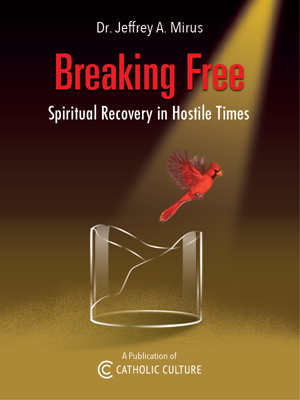Candlemas: The Feast of Light and Hope
By Jennifer Gregory Miller ( bio - articles - email ) | Jan 28, 2022 | In The Liturgical Year
From the Archives, originally published in 2014:
On February 2, the Church celebrates the Feast of the Presentation of the Lord, forty days after Christmas. In the 1962 calendar the feast is called the “Purification of the Blessed Virgin Mary” and commonly referred to as Candlemas. When this feats falls on a Sunday the General Norms of the Liturgical Year and Calendar specifies that Feasts of Our Lord that fall in the General Roman Calendar take precedence over the Sundays in Ordinary Time, so this feast would be celebrated instead of the Sunday in Ordinary Time..
This is considered a “Christmas feast,” even though it is not part of the Christmas season. This the last feast of the liturgical calendar that we commemorate Christ still as an infant child.
Candlemas is an ancient feast that has developed over the centuries. In the early Church’s liturgy, January 6 was a combined feast with Christmas, Epiphany and the Baptism of the Lord, with February 14 being the date for forty days after January 6. The famous pilgrim Egeria who traveled to the Holy Land between 381 and 384 AD. recorded the feast of the Presentation on the 14th. I do wonder if our modern St. Valentine’s Day might have originally been an offshoot of Candlemas falling on this date?
Another development is the color of vestments. In both forms the priests wear white, but before 1960 the priest would wear black, and then later violet vestments for the Candle blessing and lighting procession. Pope Benedict (then Joseph Cardinal Ratzinger) explains in his Seek That Which is Above: Meditations Through the Year:
In Rome this candle-lit procession supplanted a rowdy, dissolute carnival, the so-called Amburbale, which had survived from paganism right into Christian times. The pagan procession had magical features: it was supposed to effect the purification of the city and the repelling of evil powers.... Thus the element of encounter, again, was evident in this procession: the pagan world’s wild cry for purification, liberation, deliverance from dark powers, meets the “light to enlighten the Gentiles,” the mild and humble light of Jesus Christ. The failing (and yet still active) aeon of a foul, chaotic enslaved and enslaving world encounters the purifying power of the Christian message (pp. 26-27).
The liturgy focuses on the meeting of Christ with the elderly Simeon. With Simeon we rest our hope in the Lord. The Gospel includes the beautiful Canticle of Simeon, Nunc Dimittis, which is said at the Church’s Night Prayer or Compline. It the shortest of the canticles of the Breviary, but my personal favorite:
Lord, now you let your servant go in peace;
your word has been fulfilled:
my own eyes have seen the salvation
which you have prepared in the sight of every people:
a light to reveal you to the nations
and the glory of your people Israel.
Although I prayed it for many years, the Canticle took a deeper meaning after I married. My husband’s father died on this date in 1996, and I think of him whenever I pray this Canticle. It is a prayer of acceptance and resignation. It is almost as if this could have been my father-in-law’s prayer on his lips when he died.
When I pray it at night I am thanking God for all His goodness and fulfillment in His providential care for me. I accept His Will; I accept my death. I am personally repeating Simeon’s words and trying to prepare for my death. This is also a prayer of self-examination. Where have I failed to embrace His Will or serve Him? Do I accept Christ our Light in my life and carry that Light to others? Do I place my hope in Christ? It’s a personal reflection, but it has made this feast and Canticle more poignant for me.
Although this is a considered a Christmas feast, it also is clearly connected to the upcoming Lenten and Easter seasons. Mary and Joseph offering Jesus to God is the beginning of His earthly ministry for His Heavenly Father. This is the first of Our Lady’s seven sorrows, and a foreshadowing of the Cross.
Even the popular name Candlemas hints at the “light to reveal you to the nations“ that we celebrate at Easter, the ultimate feast of Light. The blessing and procession of candles is more than a strong indicator of the upcoming Paschal Candle. There is also a link to the bees—candles for church use were traditionally required to be at least 51% beeswax, and the new Roman missal translation brings back the honor of bees in the Exultet in the Easter Vigil:
On this, your night of grace, O holy Father, accept this candle, a solemn offering, the work of bees and of your servants’ hands, an evening sacrifice of praise, this gift from your most holy Church. But now we know the praises of this pillar, which glowing fire ignites for God’s honor, a fire into many flames divided, yet never dimmed by sharing of its light, for it is fed by melting wax, drawn out by mother bees to build a torch so precious.
Not every parish will have blessing of candles, but this is my favorite highlight of this feast. Unless your parish makes the requirement, it is not necessary to have only beeswax taper candles to be blessed for home use. Candles designated for religious use in the home can be any style: votive, tealight, or taper. I have a few blessed beeswax candles from previous Candlemas feasts. This past year during my heart health problems I used the candles when I received the Sacrament of the Anointing of the Sick twice and Communion in my home.
Children, especially boys, are attracted to candles as moths are to a flame. I like to incorporate candles in our activities throughout the liturgical year. For this feast, there are several entries in the Activities and Prayers that suggest having a Candlemas procession at home. A Marian hymn and maybe incorporating some of the prayers from the Mass of the day will make a wonderful celebration. And on my plan this year will be to make some beeswax candles, possibly our own home paschal candle.
And special foods for this day? While crepes are the traditional dish, dishes with a little fire are bound to bring the Light of Christ to mind, such as Snowballs on Fire or Cherries Jubilee.
With His grace may we continue to recognize the Light revealed to all nations and wholeheartedly be able to pray every day “Lord, now you let your servant go in peace.”
For Further Reading:
- Presentation of the Lord: A Light for the Nations
- A Sunday Feast: the Presentation of the Lord
- Christmas to Candlemas: When Is the Real End of the Christmas Season?
- The End of Christmas: Dispelling the Misconceptions
- Blessing of Candles and Propers of Mass Current Form
- Blessing of Candles and Propers of Mass 1962 Form
And for February 3, the Feast of St. Blaise, the first use of the newly blessed candles:
All comments are moderated. To lighten our editing burden, only current donors are allowed to Sound Off. If you are a current donor, log in to see the comment form; otherwise please support our work, and Sound Off!
-
Posted by: jgmiller -
Feb. 05, 2014 12:35 PM ET USA
Thank you! It's not an original idea for the Canticle of Simeon as part of Night Prayer. It is part of the Divine Office's Night Prayer or Compline. So using the Canticle is joining with the Church in prayer.
-
Posted by: Ave Maria -
Feb. 04, 2014 11:03 PM ET USA
Never thought of the Canticle of Simeon for a Night Prayer! But it truly makes for a beautiful end-of-day prayer to our Lord!. Thanks Jennifer for that...and also for the flaming desserts of light! How fun...definitely going to try them out!








